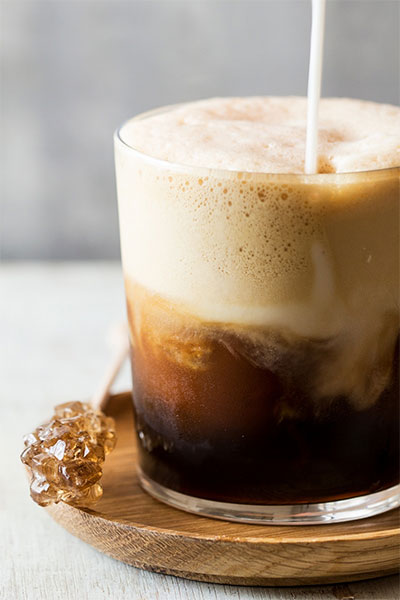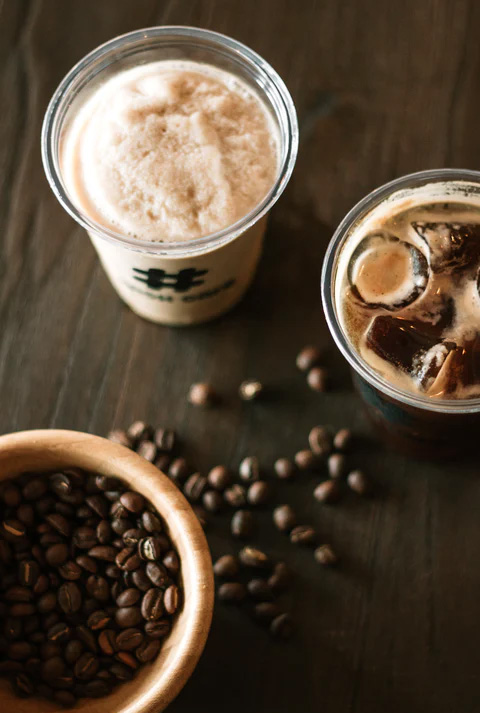Freddo Espreso, a coffee suitable for the greek summer

It is a fact that the Greek coffee culture, at least since the 1960s, was spinning around the cold coffees. Living in a country where sunshine reaches 300 days a year and spring starts in April to end in October, it is logical that the demand for cold, refreshing coffees is particularly high.
 If, by the 60s, coffee in Greece was almost synonymous with Greek Coffee, as both filter coffee and espresso were for a particularly restricted audience, a random discovery of cold coffee changed the facts: when in 1957, Dimitris Vakondi, a Nestle employee at the company's stand at the Thessaloniki International Exhibition used cold water for his instant coffee, did not know that he was laying the foundations for a café that would monopolize public interest for 40 years: frappe.
If, by the 60s, coffee in Greece was almost synonymous with Greek Coffee, as both filter coffee and espresso were for a particularly restricted audience, a random discovery of cold coffee changed the facts: when in 1957, Dimitris Vakondi, a Nestle employee at the company's stand at the Thessaloniki International Exhibition used cold water for his instant coffee, did not know that he was laying the foundations for a café that would monopolize public interest for 40 years: frappe.
Cold and refreshing, Frappe shaped the Greek coffee culture until the mid-90s, when the espresso will start to be a wider audience. The - hesitants at the beginning - Greeks embrace Italian coffee, but the problem remains: it needs a frozen beverage, able to stand in the hot temperatures of the Greek summer, preserving the taste of espresso. This need and the Greek ingenuity gave birth to Freddo Espresso and Freddo Cappuccino!
As it may seem strange, Freddo Espresso was born in our country, which is perhaps the only country he is so popular. It is true that in the birthplace and diocese of Espresso, Italy, there are frozen coffees, with a similar manufacturing process, such as Shakerato, but they are not even widespread, and on the other hand they do not characterize the overall coffee culture, as was the case in Greece with Freddo Espresso. The fact that there is no specific barista, a company or a coffee shop claiming Freddo Espresso's paternity in Greece just shows that it is an idea that evolved gradually and in many places at the same time, quite typical of the Greek temperament.
How is Freddo Espresso prepared?
Although it is almost certain that each barista, depending on his experience or the conditions prevailing in the shop he works, can vary the proportions, the basic recipe requires a double espresso and a few ice cubes - four or five. The hot espresso is shaken in a shaker with ice cubes to freeze and served in a glass of ice in order to stay cold. If we are talking about Freddo Cappuccino, then add top cold milk froth and a little grated cinnamon or chocolate. The preparation of Freddo Espresso may sound simple, but it has its secrets, concerning both the process followed and the coffee used.
 What coffee is suitable for Freddo Espresso?
What coffee is suitable for Freddo Espresso?
Although coffee is a matter of personal taste, Freddo Espresso has an issue that needs to be addressed. On the one hand, each coffee is meant to be drunk warm, and its flavor profile is not sufficiently unfolded in its cold versions, and on the other hand melting ice raises and dilutes the coffee, resulting in a change in its taste. So what is needed is a strong-bodied coffee that retains its properties in cold preparations and does not lose its flavor and taste from its inevitable dilution.
This is the reason why Robusta rich blends are preferred for the preparation of Freddo Espresso. Robusta may not have the complex aromatic and flavor profile of Arabica, but its presence offers strength and body in blends, properties absolutely desirable for a Freddo Espresso!
That being said, anyone can experiment with blends of different compositions, depending on their personal taste. 70/30 blends retain Arabica's aromatic profile and Robusta properties, such as Buondi Premium or Portioli Extra Bar. As the Robusta content increases, flavor slimming decreases, but coffee gains in body: 30/70 blends such as Crema & Gusto Classico or Lavazza's Gran Espresso are known for their strength, giving good results to cold preparations .
How can I enjoy better Freddo Espresso at home?
- Several baristi argue that the secret is in the shake: it must not be too intense or too soft to achieve the right texture. It takes a little experimentation to get the ideal move.
- Do not use too much ice in the blow of coffee. The purpose is to freeze the espresso without diluting it excessively. Additional ice may be added during serving.
- Add sugar, if you want your freddo sweet, in the hot coffee before you hit the ice.
- Do not be afraid of the Robusta-rich blends, as they give better flavor and more satisfying foam.
- If you want to make Freddo Cappuccino, add cold froth. Cold foaming is a rather difficult process that requires experience. Every barista has its own secrets, and advice is often opposed to each other.
- Use double espresso and not lungo, for a stronger taste that lasts in our glass.
For several years, Freddo Espresso, the coffee of Greek summer, was synonymous with the coffee shop. Nowadays, with the right blend, the right equipment and little experience, we can prepare Freddo Espresso that will be as delicious as one made from a barista. What's important is to drink the coffee we deserve!








